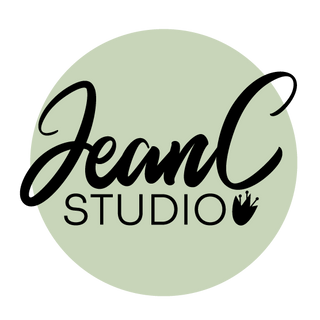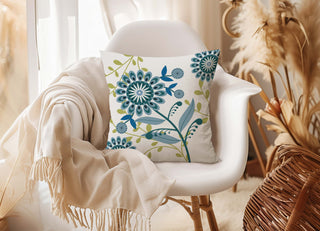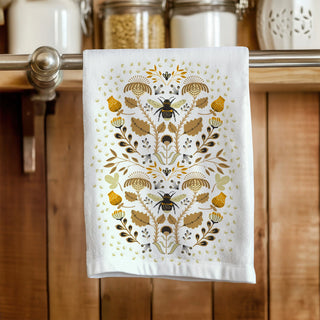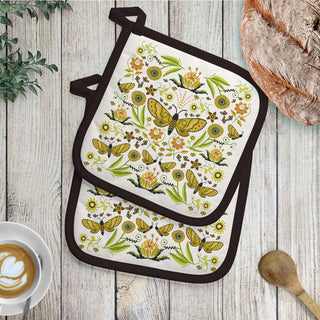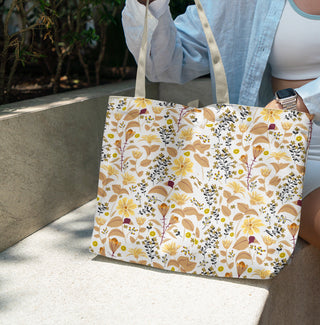In this post I'm going to try to answer a few questions about semi-synthetic fabrics, such as:
Is rayon a natural fiber? Is rayon biodegradable?
What is lyocell fabric?
What is modal fabric? What is modal made of? What is modal rayon?
What is Cupro fabric?
What is bamboo fabric? Is bamboo eco friendly?
What is recycled fleece? Is recycled fleece eco friendly?
What are Semi-Synthetic Fabrics?
First of all, fabrics like polyester, nylon, spandex, and acrylic are called synthetic fabrics. They're created using humanmade fibers derived from petrochemicals—the chemical products obtained from petroleum by refining. These fabrics are intensively treated with chemicals and are responsible for considerable emissions of carbon dioxide. So, they're definitely not environmentally friendly.
But what about semi-synthetic fabrics? These textiles are created by chemically processing natural materials, such as the cellulose from plants like wood pulp or cotton linters.
Many semi-synthetic fabrics go by their brand names and you might be familiar with some of them. But let's take a little deeper dive into the world of these textiles.
I put together a couple charts that summarize aspects of seven different semi-synthetic fabrics.
A Comparison of Semi-Synthetic Fabrics
More Information About Semi-Synthetic Fabrics
Rayon
The type of rayon most commonly made today is known as viscose rayon or just viscose.
Rayon is not an eco-friendly fiber and generally would not be considered sustainable because of its sourcing and production because:
- The vast majority of rayon is made from wood pulp sourced from clear-cutting ancient and endangered forests, primarily in North America and Asia.
- The chemical process used to produce rayon comes with a hefty environmental toll because it requires highly toxic chemicals.
- Most rayon manufacturers are located in developing countries where environmental regulations are lax so this makes it difficult to track the effects of rayon production on the environment, local communities, and their citizens.
Lyocell
Lyocell requires far less water than other cellulosic manufacturing processes. Lyocell production doesn’t create harmful by-products because the solvents involved in making it are non-toxic. And, because lyocell is made in a closed-loop system (see the graphic in this post), around 99.5% of the solvents are reused up to 200 times, meaning very little waste occurs.
Modal
Modal is made using a slightly more eco-friendly process than viscose. But is modal fabric toxic?
Far lesser concentrations of sodium hydroxide are used to create modal rayon than are used to create viscose rayon, which results in the production of less toxic waste.
However, the modal fabric manufacturing process still uses a step called "xanthation"—applying carbon disulfide to cellulose during production. Unfortunately, carbon disulfide is a neurotoxin (a toxin that is destructive to nerve tissue). The carbon disulfide is introduced into the environment through the air and through the contaminated water that is produced during the rayon manufacturing process.
And workers engaged in this process, unless protected, can experience the toxic effects. Modal is biodegradable as long as a safe dyeing process is used.
Ecovero™ Viscose
Lenzing ECOVERO™ viscose is made from local trees from controlled forests and is FSC (Forest Stewardship Council) certified. This means trees are replanted, and the wood comes entirely from responsibly managed forests. The chemicals used are recycled, and 50% less water and energy are required compared to the production of traditional viscose.
CUPRO
Cupro is a cellulosic fiber made from cotton linters. Cotton linters are short, downy fibers which are a by-product of cottonseed oil. Most Cupro fabric is made in China, where there is little transparency regarding its manufacture.
Cupro requires copper sulfate, ammonia, and caustic soda during the manufacturing process. Because of that, according to the Council of Fashion Designers of America, it's illegal to produce Cupro in the U.S. due to the manufacturers inability to comply with air and water protection regulations.
Even though Cupro is marketed as being sustainable, too many factors in its production hugely counter this claim. There are better semi-synthetic fabric alternatives. Cupro is classified as biodegradable (which means it will break up over time). Technically, so will plastic, but that doesn’t make it sustainable.
Bamboo Linen
High quality bamboo fabric is made using practices that do not extract cellulose. Instead, a natural enzyme is used on crushed bamboo wood fibers. These fibers are then washed and spun into yarn and the fabric made is sometimes called bamboo linen.
When bamboo fabric is made through what is called the mechanical method, it is not environmentally harmful, and the resulting textile is strong and long-lasting. However, most types of bamboo fabric are not made with this mechanical process.
When shopping, look for organic bamboo linen fabrics certified by The Global Organic Textile Standard (GOTS). Search the GOTS Public Database to find certified vendors.
Recycled (Eco) Fleece
The recycled PET (polyethylene terephthalate) used to make fleece comes from recycled plastic bottles. The post-consumer waste is cleaned and then sterilized. After drying, the bottles are crushed into tiny chips of plastic that are washed again.
Fleece is also being made from more natural materials, such as cotton and hemp. These continue to have the same properties as technical fleece and wool with less harmful effects.
However, because only 14% of apparel is made from recycled fibers, there is still quite a way to go.
Other Questions
What is Tencel™?
Tencel is a brand name for lyocell and modal fibers.
What are Microplastics?
Plastic debris that is less than five millimeters in length (or about the size of a pencil eraser) are called “microplastics.” Not a lot is known about microplastics and their impacts on the environment and our health yet, but there is a lot of concern. These small particles have turned up everywhere from the depths of the ocean to the top of Mount Everest and even throughout the human body. Synthetic fabrics like polyester, can shed microplastic fibers when they’re washed.
What Is a Closed-Loop System?
A closed-loop system is a production model where materials are continuously reused and recycled, minimizing waste and maximizing resource use. It can be viewed like this:

Conclusion
In the world of textiles, sustainability has become a critical factor influencing consumer choices and, as a result, industry practices. I think it's exciting to see companies putting their efforts and resources into developing more sustainable fabrics. Consumers can play a huge role in steering corporations towards decisions that will affect the environment in positive ways. And then, we all win.
Resources
Find out which companies carry the GOTS (Global Organic Textile Standard) certification.
Quick Guide to Different Types of Textile Fibres - Common Objective website
Main photo courtesy of Matt Artz from Unsplash
